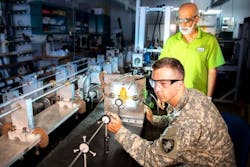Artificial intelligence (AI) for battlefield decision-making among top Army research initiatives for 2019
WASHINGTON – Targets emerge in seconds, incoming enemy fire puts lives at risk and shifting combat dynamics require immediate, on-the-spot decisions in a matter of seconds -- all as soldiers navigate the complex web of threats during all-out, high-risk ground-warfare. Kris Osborn at Warrior Maven reports. Continue reading original article
The Military & Aerospace Electronics take:
13 Jan. 2020 -- These kinds of predicaments, which characterize much of what soldiers train to face, are immeasurably improved by emerging applications of artificial intelligence (AI), which can gather, fuse, organize and analyze otherwise disparate pools of combat-sensitive data for individual soldiers.
Target information from night vision sensors, weapons sights, navigational devices and enemy fire detection systems can increasingly be gathered and organized for individual human soldier decision-making.
However, what comes after this? Where will AI go next in terms of changing modern warfare for Army infantry on the move in war? The Army Research Laboratory is now immersed in a complex new series of research and experimentation initiatives to explore a “next-level” of AI.
John Keller, chief editor
Military & Aerospace Electronics
